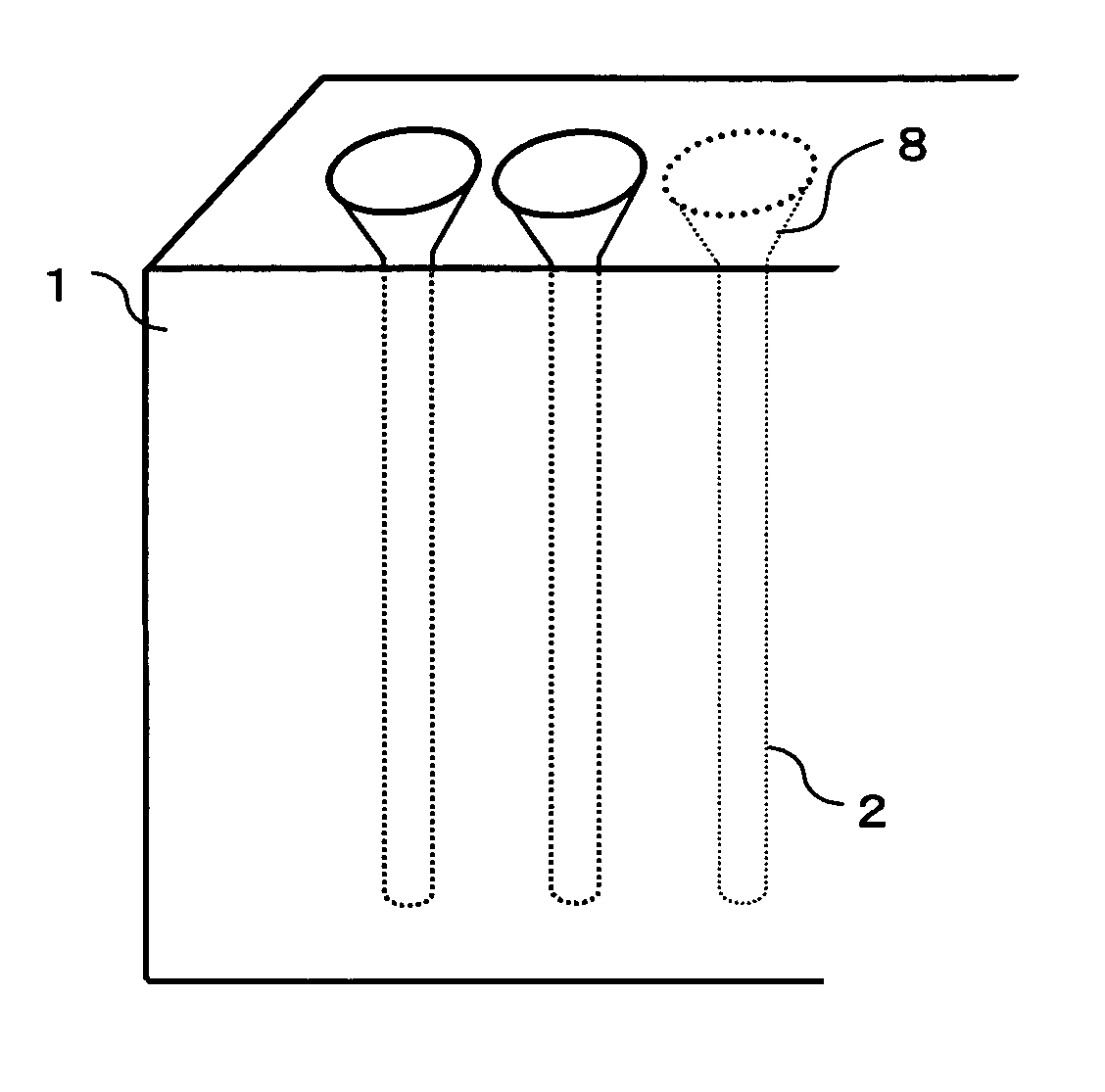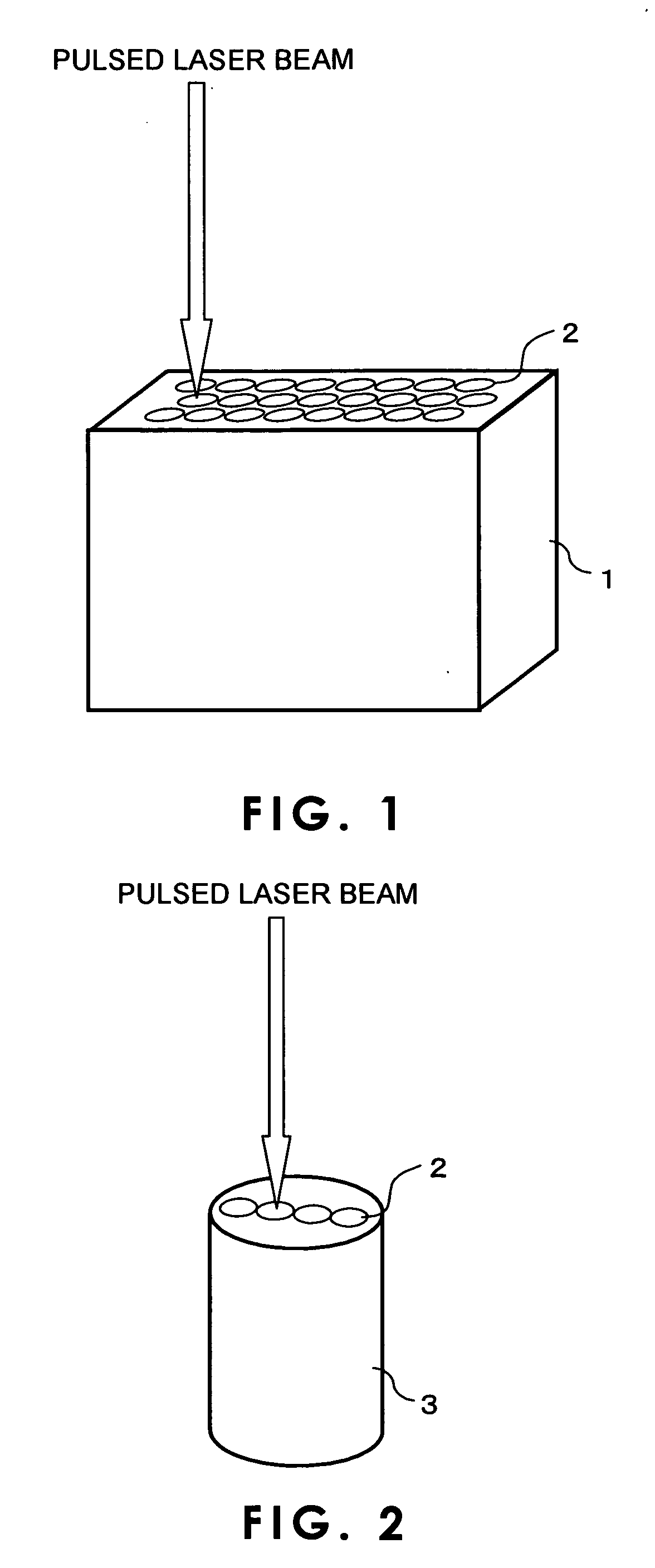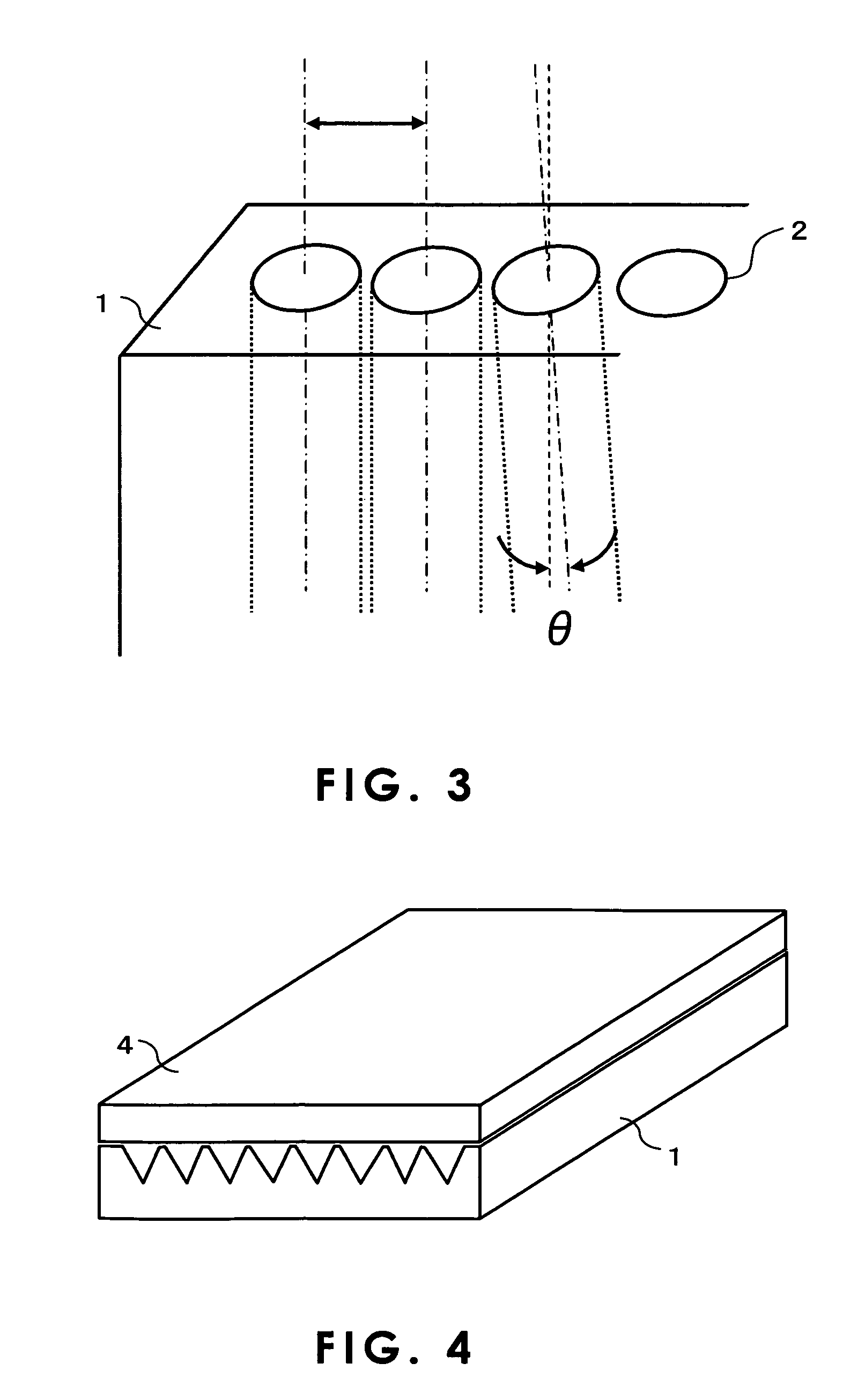Optical connector and method of manufacturing the optical connector
a technology of optical connectors and manufacturing methods, applied in the field of optical connectors, can solve the problems of poor productivity, difficult insertion of optical fibers into optical fibers, and difficulty in achieving the dimensional accuracy of insertion holes, so as to prevent the occurrence of latent damage, enhance fabrication accuracy, and enhance productivity
- Summary
- Abstract
- Description
- Claims
- Application Information
AI Technical Summary
Benefits of technology
Problems solved by technology
Method used
Image
Examples
example 1
[0031] An LD excited Ti sapphire pulsed laser beam with a pulse repetition frequency of 1 kHz and a center wavelength of 800 nm was condensed with an objective lens (magnification: 5 times) to regulate the spot diameter to 125 μm. The laser beam was applied to a quartz glass cylindrical substrate (bandgap of the material: 7.9 eV), with a diameter of 3 mm and a height of 20 mm, having a laser irradiation face which had been subjected to optical polishing. Regarding irradiation conditions and machining speed, the pulse width was not more than 130 femtoseconds, the output was 200 mW, and the scanning speed was 100 μm. Four insertion holes were formed at intervals of 250 μm in the cylindrical substrate. Next, the cylindrical substrate with insertion holes formed therein was immersed in a 4 wt % aqueous hydrofluoric acid solution for one hr for etching with an ultrasonic cleaner. Thus, a four-core ferrule for optical communication was prepared.
[0032] The insertion holes of the ferrule f...
example 2
[0033] An LD excited Ti sapphire pulsed laser beam with a pulse repetition frequency of 1 kHz and a center wavelength of 800 nm was condensed with an objective lens (magnification: 5 times) to regulate the spot diameter to 125 μm. The laser beam was applied to a 5 mm-thick rectangular quartz glass substrate (bandgap of the material: 7.9 eV) having a laser irradiation face which had been subjected to optical polishing. Regarding irradiation conditions and machining speed, the pulse width was not more than 130 femtoseconds, the output was 200 mW, and the scanning speed was 100 μm. Ten insertion holes were formed at intervals of 250 μm in the substrate. Next, the cylindrical substrate with insertion holes formed therein was immersed in a 4 wt % aqueous hydrofluoric acid solution for one hr for etching with an ultrasonic cleaner. Thus, a ten-core fiber array for optical communication was prepared.
[0034] The insertion holes of the array for optical communication were cylindrical and had...
example 3
[0036] A ferrule for optical communication was prepared under the same machining conditions as in Example 2, except that, in the formation of the ten insertion holes, the interval of the insertion holes was changed to 125 μm.
[0037] The insertion holes of the ferrule for optical communication were cylindrical and had an inner diameter of 125 μm. The distance between mutually adjacent insertion holes was 250 μm±0.4 μm, and the center-to-center dimension between both ends of the ten insertion holes was 1125 μm±0.4 μm. The degree of parallelization in the Z axis direction (direction perpendicular to laser beam irradiation face) of the insertion holes was ±0.07 degree. Further, it was confirmed that an about 60-degree taper part was formed in the insertion hole end on the laser irradiation side.
[0038] In the same manner as in Example 2, optical fibers were inserted and fixed through bonding to the fiber ferrule for optical communication, and the coupling loss was measured. As a result,...
PUM
| Property | Measurement | Unit |
|---|---|---|
| transparency | aaaaa | aaaaa |
| diameter | aaaaa | aaaaa |
| diameter | aaaaa | aaaaa |
Abstract
Description
Claims
Application Information
 Login to View More
Login to View More - R&D
- Intellectual Property
- Life Sciences
- Materials
- Tech Scout
- Unparalleled Data Quality
- Higher Quality Content
- 60% Fewer Hallucinations
Browse by: Latest US Patents, China's latest patents, Technical Efficacy Thesaurus, Application Domain, Technology Topic, Popular Technical Reports.
© 2025 PatSnap. All rights reserved.Legal|Privacy policy|Modern Slavery Act Transparency Statement|Sitemap|About US| Contact US: help@patsnap.com



